Building CompuCell3D on Windows using Visual Studio 2015
Building CompuCell3D from source on Windows systems using freely available Visual Studio 2015 is fairly straightforward. We provide all dependencies so the only thing you need to do is to install Visual Studio 2015 (Community Edition is free and fully functional) , SWIG, CMAKE and GIT for windows . The following will help you build and install CC3D on most Windows systems.
Prerequisites
Hardware
CompuCell3D may build and run with less capable hardware, but has been tested with the following:
- 512MB RAM
- Hardware 3D Graphics Acceleration (most modern graphics cards)
Build Tools and Dependencies
SWIG, CMAKE and GIT for windows
SWIG (version 1.3 or higher recommended) - after installing SWIG add SWIG installation directory to search path
CMAKE (CMake-GUI is recommended)
- A directory with precompiled dependencies (that include Python and all libraries that CC3D depends on)
= Installing CC3D Compile Dependencies =
Go to dependency repository and download cc3d_vs2015_dependencies_2017.zip
Unpack it to your C:/ or D:/ drive and make sure you have either C:/prerequisites_2017 or D:/prerequisites_2017 on your system.
Adding SWIG to search Path
In my case swig was installed to C:/swig. Then I go to open Control Panel » System » Advanced » Environment Variables. They are separated into user and machine specific values. You can view and edit their values there. Their current values upon launch are made available to all programs. I will add c:\swig to PATH variable (I am editing user environment variables, not the global ones) as shown below:
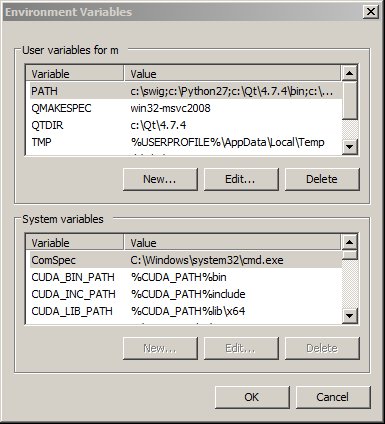
Source Code
Once the dependencies have been satisfied, obtain the source code from our GIT repository using the following command from git command-line tool:
git clone https://github.com/CompuCell3D/CompuCell3D.git D:/CC3D_SOURCE
Take a look at the screenshot to see how this would look:

This will create a directory d:\CC3D_SOURCE` and download the source code into it.
At this point we are ready to configure CC3D for building using Visual Studio 2015
Generating VS 2015 project using CMake
CompuCell3D is configured using the CMake build system. Double click CMake icon and set source and build directories to d:\CC3D_SOURCE\CompuCell3D and D:\CC3D_SOURCE\cc3d_build as show below:
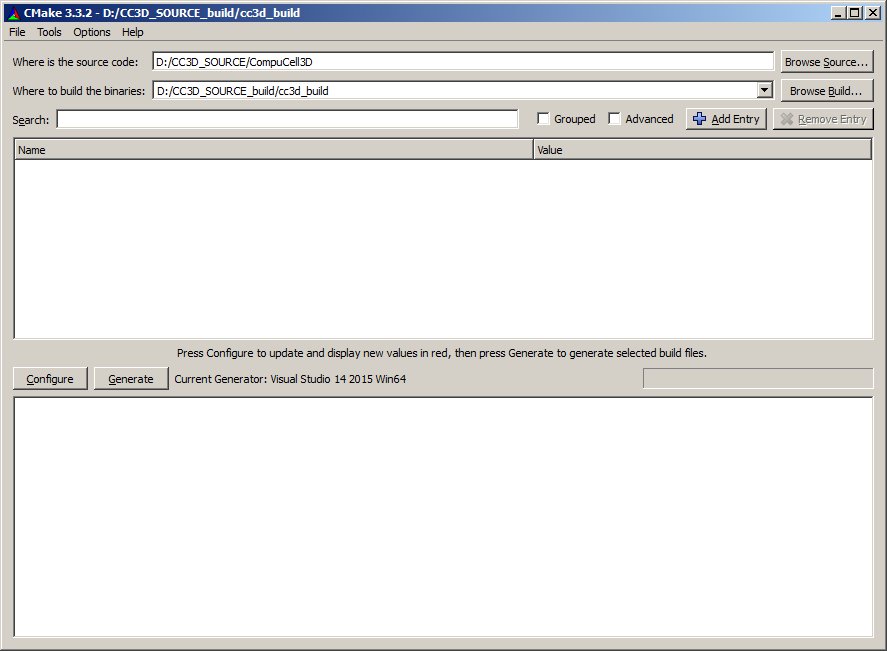
After clicking Configure you will get a pop up dialog where you should select Visual Studio Project 2015 as a target project generator - here we will choose 64-bit build
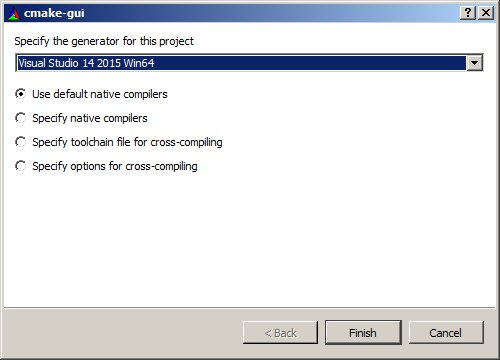
After configuration is done you will get a screen that looks somewhat similar to the one below:
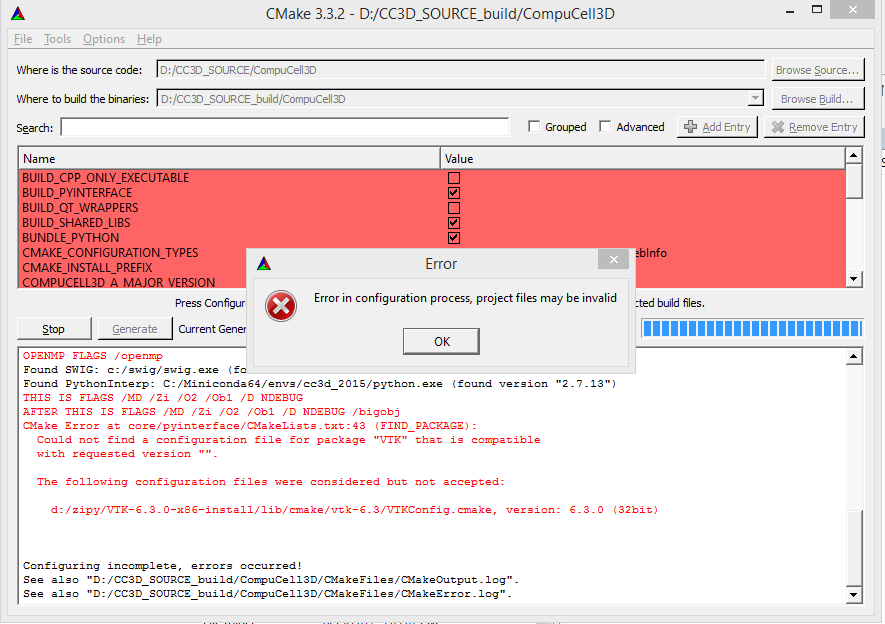
As you can see it informs you that the error has occurred. This is normal and it means we need to provide certain type of information to CMAKE:
Directory with VTK CMake configure scripts (VTK_DIR = D:/prerequisites_2017/64bit/Python27/Library/lib/cmake/vtk-6.3)
Folder into which we should install CC3D (CMAKE_INSTALL_PREFIX = D:/cc3d_install)
Folder with CC3D Windows Dependencies (WINDOWS_DEPENDENCIES = D:/prerequisites_2017/64bit)
After we input these changes (see below) and click Configure again we will get the following screen:
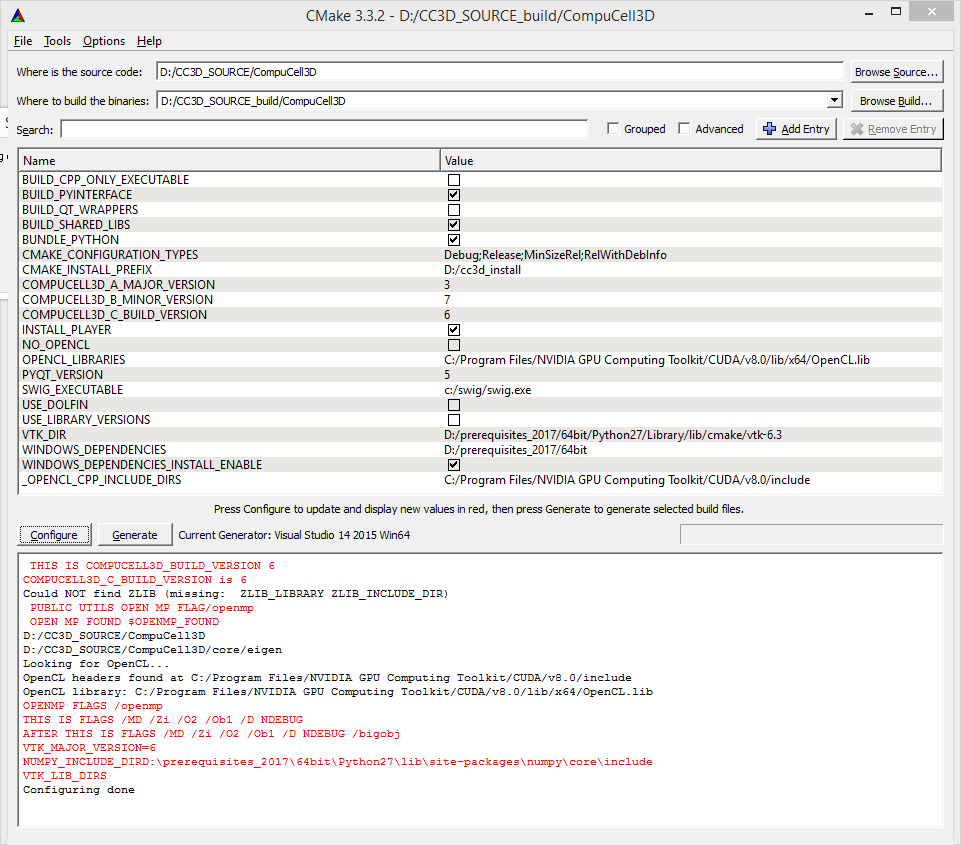
We are almost done, but now we need to make sure that Python library, Python include path and Python executable point to the Python distribution that is bundled in the D:/prerequisites_2017/64bit folder:
To mo that click Advanced check-box at the top and type Python in the search bar next to the box you have just clicked. The input the following:
PYTHON_EXECUTABLE = D:/prerequisites_2017/64bit/Python27/python.exe
PYTHON_INCLUDE_DIR = D:/prerequisites_2017/64bit/Python27/include
PYTHON_LIBRARY = D:/prerequisites_2017/64bit/Python27/libs/python27.lib
as shown below:
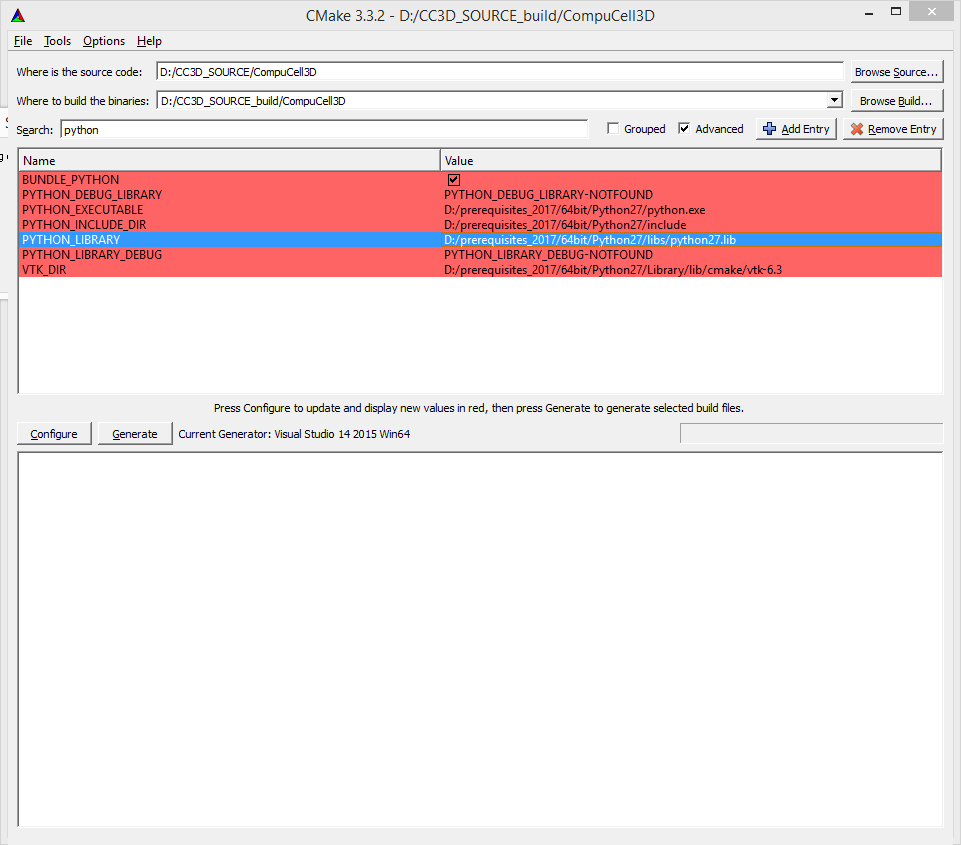
You may check NO_OPEN_CL option if you do not have OPEN_CL toolkit installed
Click Configure , followed by Generate buttons and then open up Visual Studio 2015.
Compilation with Visual Studio
1. Open up ALL_BUILD project in D:/CC3D_SOURCE_build/cc3d_build - go to File->Project/Solution... and navigate to D:/CC3D_SOURCE_build/cc3d_build and choose ALL_BUILD:
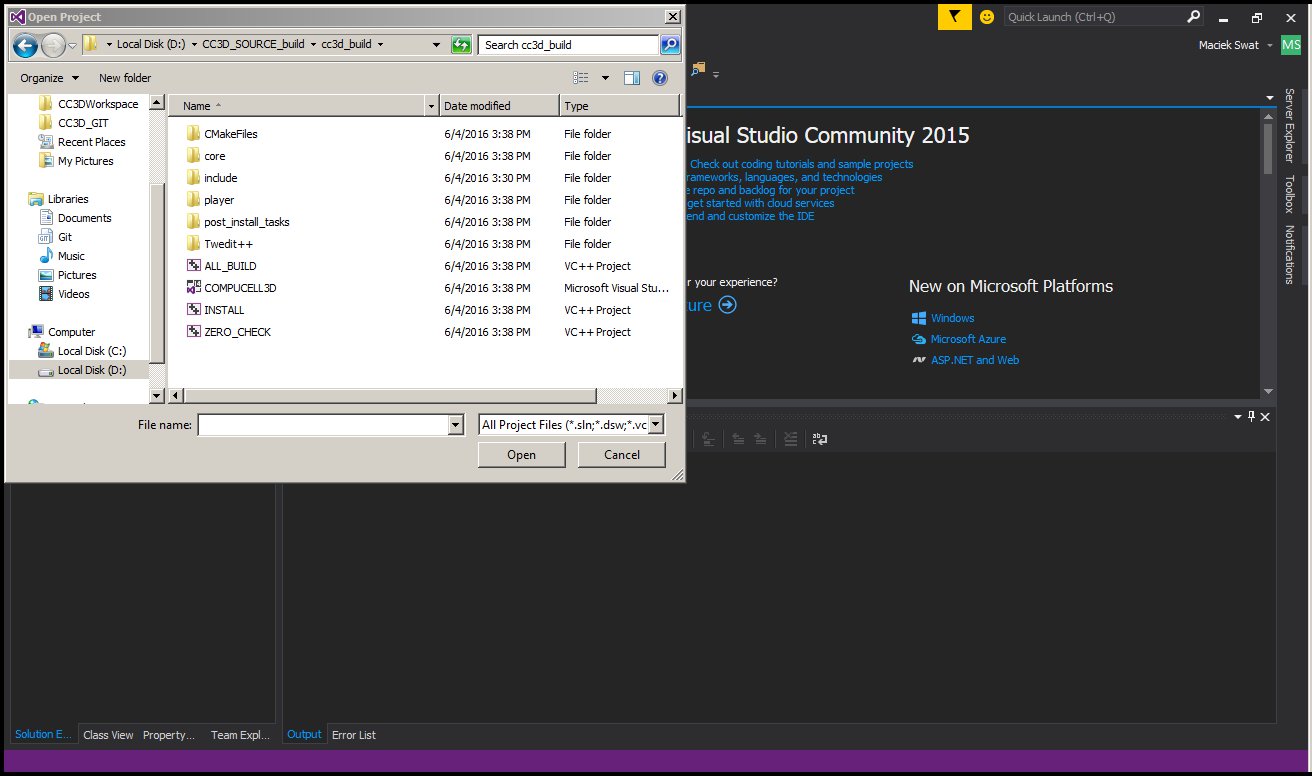
2. Change build configuration to Release or RelWithDebInfo - go to Build->Configuration Manager... and pick RelWithDebInfo from pull-down menu:
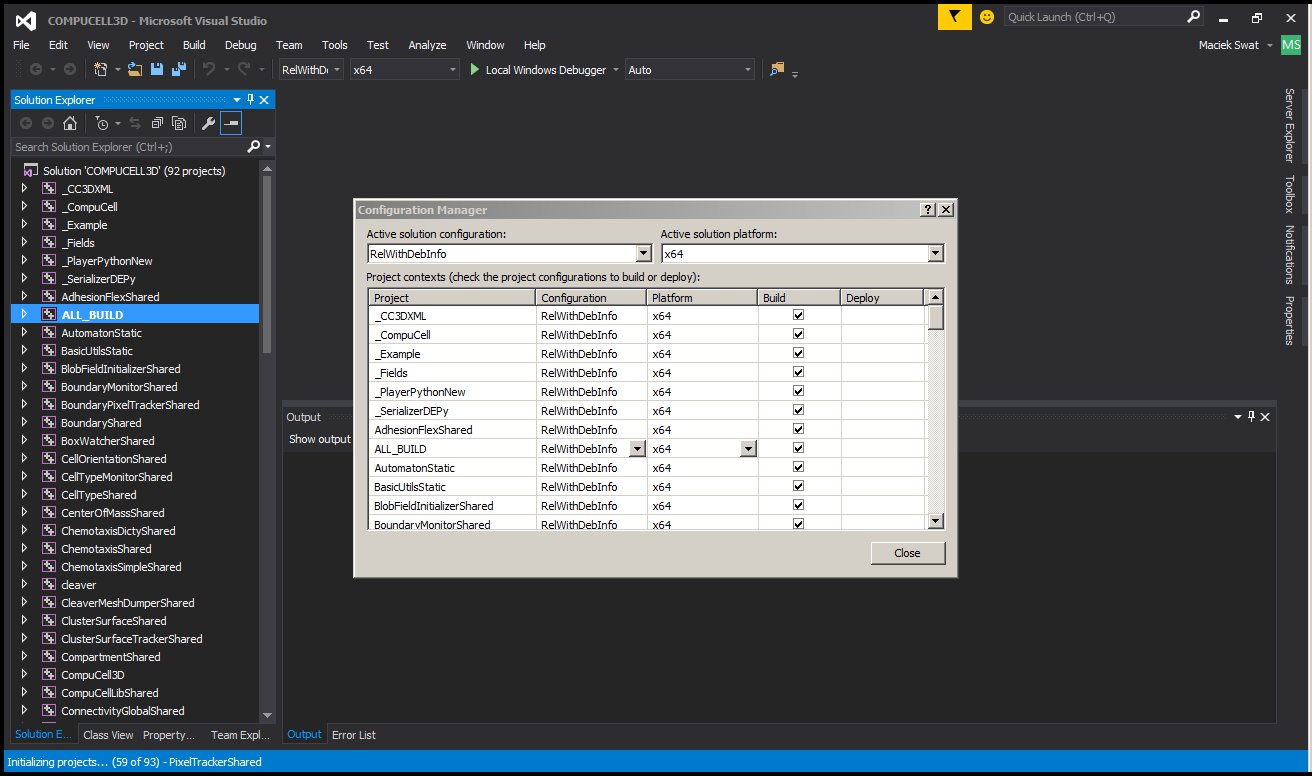
3. Right-click on the ALL_BUILD in solution explorer and choose build from the context menu to start compilation
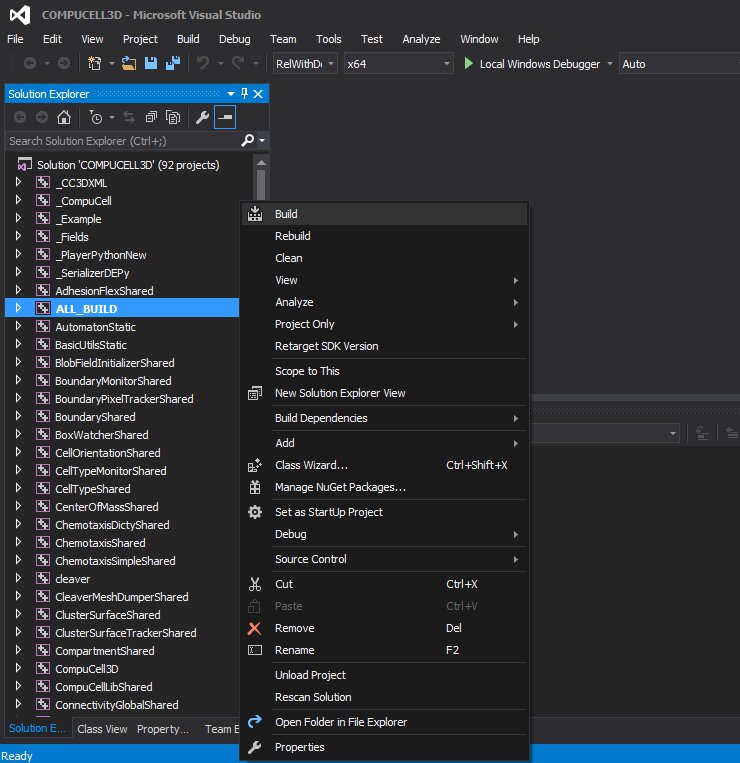
4.Right-click on the INSTALL in solution explorer and choose build from the context menu to install CompuCell3D into d:\CompuCell3D:
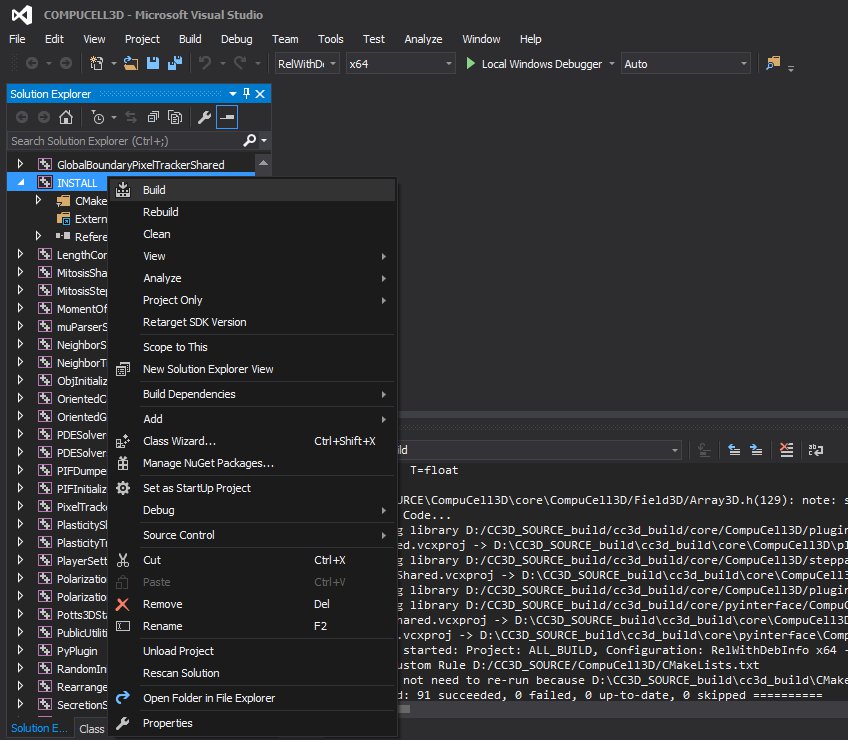
It takes a while for windows to copy all the files to the installation folder but once this is done , go to the directory where you installed CC3D (in my case it was d:/cc3d_install) by typing at command-line prompt
D:
followed by
cd cc3d_install
followed by CompuCell3d start-up script:
compucell3d.bat

This completes manual build of CC3D on Windows using Visual Studio 2015.
Building CompuCell3D on Windows using Visual Studio 2015
Building CompuCell3D from source on Windows systems using freely available Visual Studio 2015 is fairly straightforward. We provide all dependencies so the only thing you need to do is to install Visual Studio 2015 (Community Edition is free and fully functional) , SWIG, CMAKE and GIT for windows . The following will help you build and install CC3D on most Windows systems.
Prerequisites
Hardware
CompuCell3D may build and run with less capable hardware, but has been tested with the following:
- 512MB RAM
- Hardware 3D Graphics Acceleration (most modern graphics cards)
Build Tools and Dependencies
SWIG, CMAKE and GIT for windows
SWIG (version 1.3 or higher recommended) - after installing SWIG add SWIG installation directory to search path
CMAKE (CMake-GUI is recommended)
- A directory with precompiled dependencies (that include Python and all libraries that CC3D depends on)
= Installing CC3D Compile Dependencies =
Go to dependency repository and download CC3D_VS2015_dependencies.zip
Unpack it to your C:/ or D:/ drive and make sure you have either C:/prerequisites or D:/prerequisites on your system.
Adding SWIG to search Path
In my case swig was installed to C:/swig. Then I go to open Control Panel » System » Advanced » Environment Variables. They are separated into user and machine specific values. You can view and edit their values there. Their current values upon launch are made available to all programs. I will add c:\swig to PATH variable (I am editing user environment variables, not the global ones) as shown below:

Source Code
Once the dependencies have been satisfied, obtain the source code from our GIT repository using the following command from git command-line tool:
git clone https://github.com/CompuCell3D/CompuCell3D.git d:\CODE_TGIT
Take a look at the screenshot to see how this would look:

This will create a directory d:\CC3D_SOURCE` and download the source code into it.
At this point we are ready to configure CC3D for building using VS 2008
Generating VS 2015 project using CMake
CompuCell3D is configured using the CMake build system. Double click CMake icon and set source and build directories to d:\CC3D_SOURCE\CompuCell3D and D:\CC3D_SOURCE\cc3d_build as show below:

After clicking Configure you will get a pop up dialog where you should select Visual Studio Project 2015 as a target project generator - here we will choose 64bitbuild

After configuration is doe you will get a screen that looks somewhat similar to the one below:
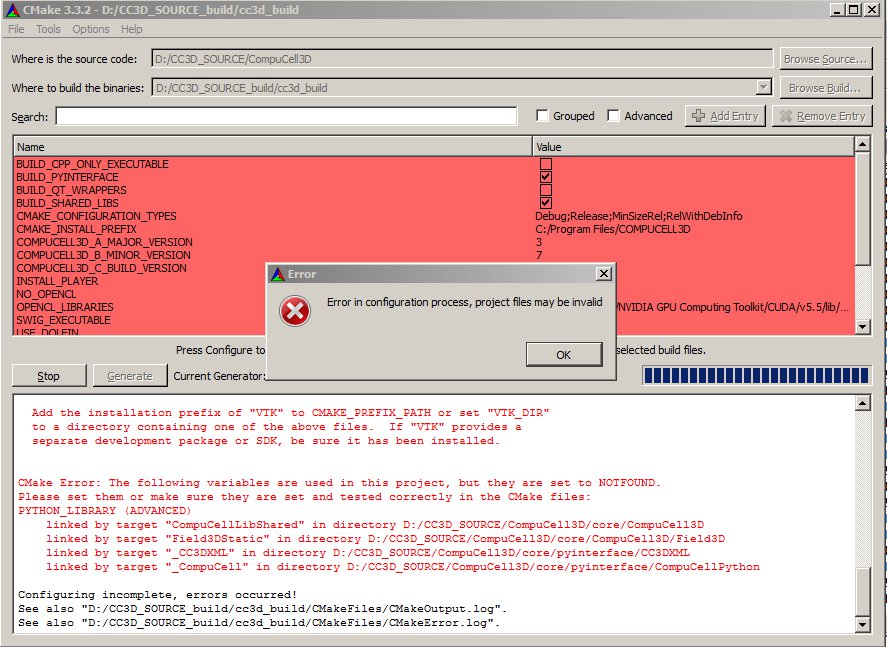
As you can see it informs you that the error has occurred. This is normal and it means we need to provide certain type if information to CMAKE. First let's set properly Python paths in the CMAKE window . Click Advanced check-box at the top and type Python in the search bar next to the box you have just clicked. Make sure that all Python paths are input as in the screen below. If you installed prerequisites to the C:// drive than replace D:/ with the C:/ in the entries below and hit Configure button again
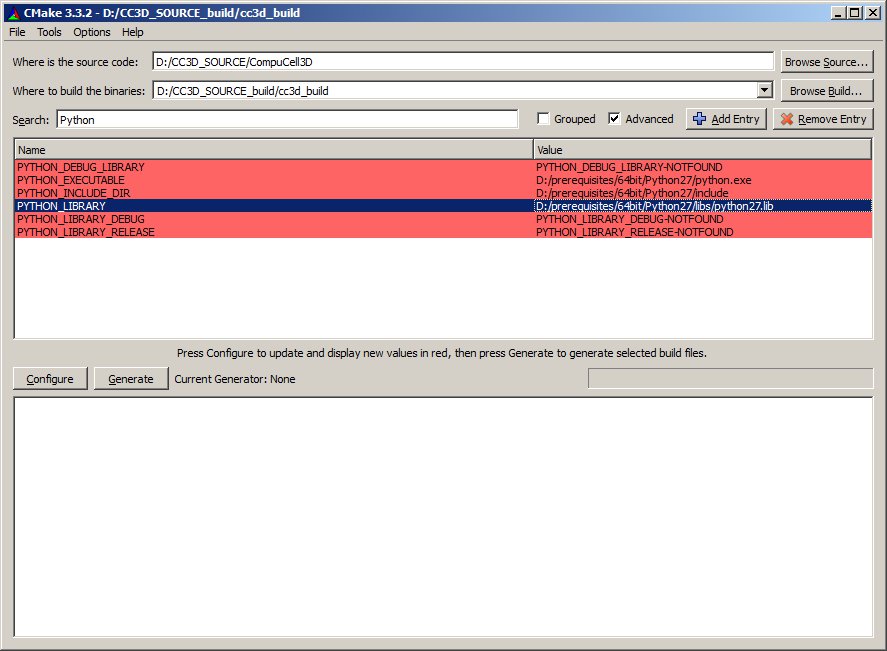
As you can see we still get errors , this time it is about missing VTK.

Let's fix that by pointing CMAKE to the VTK installation that is included in the D:/prerequisites directory. We will also change the location of Windows dependencies to point to D:/prerequisites so in the screen below there are two changes one in line with VTK_DIR and another one in the line WINDOWS_DEPENDENCIES:
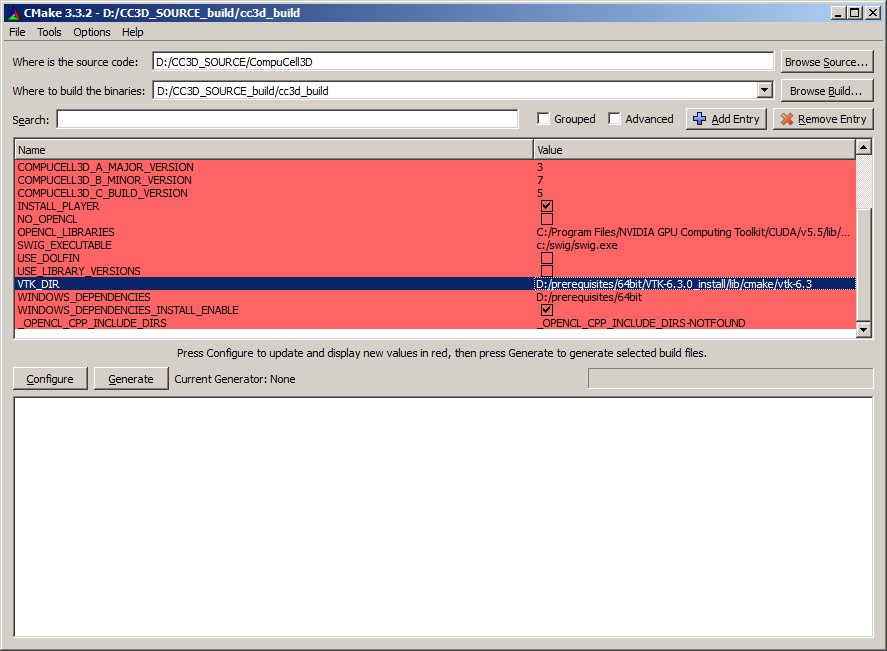
You may check NO_OPEN_CL option if you do not have OPEN_CL toolkit installed
Additionally, choose the location where you want CC3D to be installed. To do this change CMAKE_INSTALL_PREFIX line as shown below. Here we are installing CC3D to the D:/cc3d_375 directory. Feel free to alter this location as you see fit.

Click Configure , AND Generate buttons and then open up Visual Studio 2015.
Compilation with Visual Studio
1. Open up ALL_BUILD project in D:/CC3D_SOURCE_build/cc3d_build - go to File->Project/Solution... and navigate to D:/CC3D_SOURCE_build/cc3d_build and choose ALL_BUILD:

2. Change build configuration to Release or RelWithDebInfo - go to Build->Configuration Manager... and pick RelWithDebInfo from pull-down menu:

3. Right-click on the ALL_BUILD in solution explorer and choose build from the context menu to start compilation

4.Right-click on the INSTALL in solution explorer and choose build from the context menu to install CompuCell3D into d:\CompuCell3D:

It takes a while for windows to copy all the files to the installation folder but once this is done , go to the directory where you installed CC3D by typing at command-line prompt
D:
followed by
cd COMPUCELL3D
followed by CompuCell3d start-up script:
compucell3d.bat

This completes manual build of CC3D on Windows using Visual Studio 2015.